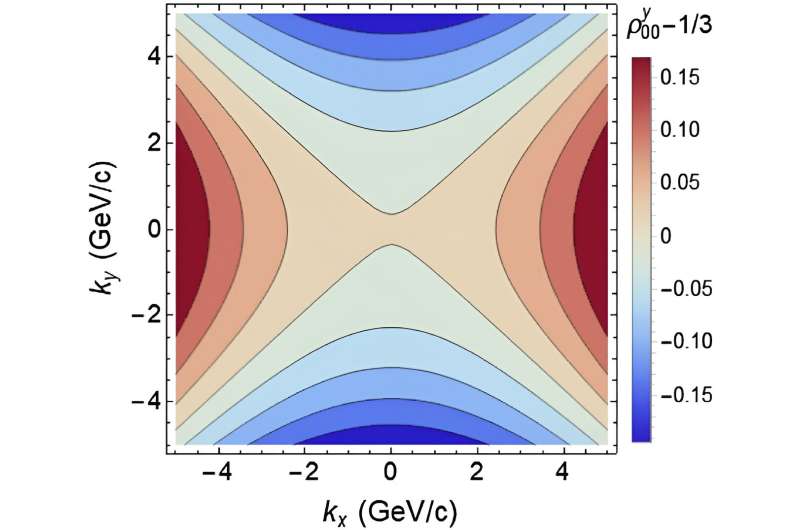This article has been reviewed according to Science X's editorial process and policies. Editors have highlighted the following attributes while ensuring the content's credibility:
fact-checked
peer-reviewed publication
proofread
Researchers make progress in vector meson spin physics

A research team led by Prof. Wang Qun from the University of Science and Technology of China (USTC) of the Chinese Academy of Sciences (CAS) has made significant progress in the theoretical study of vector meson spin physics, specifically regarding the intriguing behavior of ϕ mesons generated during collisions between gold nuclei.
Their results, published in Physical Review Letters, titled "Spin Alignment of Vector Mesons in Heavy-Ion Collisions," represent a significant milestone that challenges conventional theoretical models.
Vector fields are an effective representation of strong interactions between exotic quarks. In the hadronization phase of relativistic heavy-ion collisions, where chiral symmetry is spontaneously broken, the strongly interacting matter can be described by quarks and by the SU(3) pseudo-Goldstone boson field surrounding the quarks.
The vector field is determined by the gradient degree of the Goldstone boson field, where the vector field coupled to strange quarks and antistrange quarks is called the ϕ-vector field.
In 2019, the research group led by Wang suggested that the influence of the ambient vector field felt by the strange quarks and anti-strange quarks and leads to a significant deviation of the spin alignment of the ϕ meson by 1/3.
In the latest work, researchers derived the relativistic spin Boltzmann equation for vector mesons from the Kadanoff-Baym equation, thus establishing a link between the spin alignment of ϕ mesons and the spin polarization of their component exotic quarks, and anti-exotic quarks, during hadronization.
In this research work, they selected the transverse rise and longitudinal fall of the vector field as two parameters of the model, taking into account the asymmetry of the quark gluon plasma in the transverse direction (perpendicular to the direction of the beam) and the longitudinal direction (along the direction of the beam).
The values of the two parameters for different collision energies are determined by the spin alignment in the normal direction of the reaction surface as well as in the direction of the collision parameters, which can well explain the dependence of the spin alignment on the transverse momentum of the ϕ meson.
This study could further promote the development of high-energy nuclear spin physics and offer a new frontier direction in heavy-ion collision physics.
More information: Xin-Li Sheng et al, Spin Alignment of Vector Mesons in Heavy-Ion Collisions, Physical Review Letters (2023). DOI: 10.1103/PhysRevLett.131.042304
Journal information: Physical Review Letters
Provided by University of Science and Technology of China




















